The difference between primary and secondary active transport is that primary active transport utilizes ATP to uptake nutrients while secondary active transport utilizes the electrochemical gradient to uptake nutrients. Active transport is a type of cellular transport in which molecules (such as ions, glucose, and amino acids) are transferred across a biological membrane to a place where there are already plenty of them. Primary Active Transport of Calcium Ions. The pumping of sodium / potassium (Na + / K + ATPase) is the best example of active primary transport. The primary active transport pumps such as photon pump, calcium pump, and sodium-potassium pump are very important to maintain the cellular life. Primary active transport.  Active transport consumes cell energy as the molecules are transported against their concentration gradient. Primary transporters include the rotary motor ATPases (F-, A-, and V-ATPases), P-type ATPases and a large family of integral membrane proteins referred to as ABC (ATP binding cassette) transporters. Secondary active transport, is transport of molecules across the cell membrane utilizing energy in other forms than ATP.
Active transport consumes cell energy as the molecules are transported against their concentration gradient. Primary transporters include the rotary motor ATPases (F-, A-, and V-ATPases), P-type ATPases and a large family of integral membrane proteins referred to as ABC (ATP binding cassette) transporters. Secondary active transport, is transport of molecules across the cell membrane utilizing energy in other forms than ATP.
It involves using energy (usually ATP) to directly pump a solute across a membrane against its electrochemical gradient. As mentioned earlier, this kind of transport requires energy for its functioning. primary active transport is the direct use of ATP to move molecules across a cell membrane from an area of low concentration to an area of high concentration against it's concentration gradient 24 explain primary active transport (2 things)
. Sodium-potassium pump, the most essential pump in the animal cell is thought about as an example of primary active transport. Primary active transport or direct active transport uses metabolic energy to transfer molecules across a membrane. It requires an additional source of energy derived from the cell. Primary Active Transport. hints a primary active transport process is one in which _____. Secondary active transport does not directly require ATP: instead, it is the movement of material due to the electrochemical gradient established by primary active transport.
Transcribed image text: Primary and secondary active transport proteins differ in that primary active transport proteins ____ The Na+ K + moves sodium in the ____ direction compared with the direction it travels through sodium leakage channels. The electrochemical gradients set up by primary active transport store energy, which can be released as the ions move back down their gradients. Secondary active transport uses the energy stored in these gradients to move other substances against their own gradients. First coined in the late 19th century, the name "Silk Road" has fallen into What is Primary Active Transport? 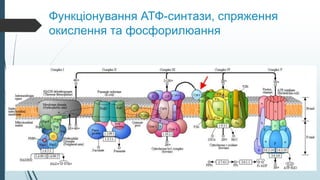 Primary Active Transport. Primary active transport is that which directly uses a source of chemical energy (for example, ATP) to move molecules across a membrane against its gradient.
Primary Active Transport. Primary active transport is that which directly uses a source of chemical energy (for example, ATP) to move molecules across a membrane against its gradient.
Learn. The two systems for transporting molecules across the cell membrane are known as active and passive transport, respectively. 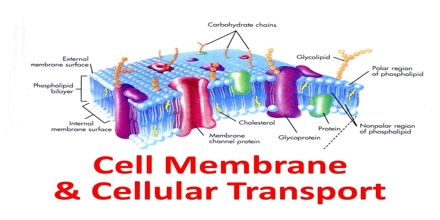 Types of Primary Transport.
Types of Primary Transport. 
 Types of Active Transport. Primary active transport is otherwise called direct dynamic or uniport transport. Primary active transport can move solutes, such as ions, against their concentration gradient. This Co-Transport can be either via antiport or symport. There is a printable worksheet available for download here so you can take the quiz with pen and paper. Created by. Primary active transport requires inputting energy from ATP hydrolysis into moving molecules across cell membranes against their concentration gradient.
Types of Active Transport. Primary active transport is otherwise called direct dynamic or uniport transport. Primary active transport can move solutes, such as ions, against their concentration gradient. This Co-Transport can be either via antiport or symport. There is a printable worksheet available for download here so you can take the quiz with pen and paper. Created by. Primary active transport requires inputting energy from ATP hydrolysis into moving molecules across cell membranes against their concentration gradient.
Answer: Active transport involves molecules moving against a gradient or other form of resistance, such as from an area of lower to higher charge. Why is active transport important to root hair cells? 
 Which is the best definition of active transport? To move substances against a concentration or electrochemical gradient , the cell must utilize energy in the form of ATP during active transport. Active transport consumes energy and it takes place in two phases. Flashcards. Primary active transport, also called direct active transport, directly uses metabolic energy to transport molecules across a membrane. Substances that are transported across the cell membrane by primary active transport include metal ions, such as Na +, K +, Mg 2+, and Ca 2+.These charged particles require ion pumps or ion channels to cross membranes and distribute through the body.
Which is the best definition of active transport? To move substances against a concentration or electrochemical gradient , the cell must utilize energy in the form of ATP during active transport. Active transport consumes energy and it takes place in two phases. Flashcards. Primary active transport, also called direct active transport, directly uses metabolic energy to transport molecules across a membrane. Substances that are transported across the cell membrane by primary active transport include metal ions, such as Na +, K +, Mg 2+, and Ca 2+.These charged particles require ion pumps or ion channels to cross membranes and distribute through the body.  Active transport. Metal ions, such as Na+, K+, Mg2+, and Ca2+, are examples of molecules moved across the cell membrane through primary active transport. Primary active transport The primary active transport activity of the pump occurs when it is oriented such that it spans the membrane with its extracellular side closed, and its intracellular region open and associated with a molecule of ATP. Calcium ions are normally maintained at extremely low concentration in the intracellular cytosol of virtually all cells in the body, at a concentration about 10,000 times less than that in the extracellular fluid.
Active transport. Metal ions, such as Na+, K+, Mg2+, and Ca2+, are examples of molecules moved across the cell membrane through primary active transport. Primary active transport The primary active transport activity of the pump occurs when it is oriented such that it spans the membrane with its extracellular side closed, and its intracellular region open and associated with a molecule of ATP. Calcium ions are normally maintained at extremely low concentration in the intracellular cytosol of virtually all cells in the body, at a concentration about 10,000 times less than that in the extracellular fluid.  The second transport method is still considered active because it depends on the use of energy as does primary transport ( see image below ).
The second transport method is still considered active because it depends on the use of energy as does primary transport ( see image below ).  Primary active transport utilizes energy in form of ATP to transport molecules across a membrane against their concentration gradient. Active transport involves molecules moving against a gradient or other form of resistance, such as from an area of lower to higher charge. Primary active transport is also known as direct active transport. In primary active transport, the energy is derived directly from the breakdown of ATP. Calcium ions are normally maintained at extremely low concentration in the intracellular cytosol of virtually all cells in the body, at a concentration about 10,000 times less than that in the extracellular fluid. The difference between primary and secondary active transport is that primary active transport utilizes ATP to uptake nutrients while secondary active transport utilizes the electrochemical gradient to uptake nutrients. Primary active transport includes movement of ions and nutrients across semi permeable membrane through carrier proteins powered by ATPase. The goal of primary active transport is to move ions across the cell membrane against their concentration gradients; the goal; Question: 3. Active transport is used by cells to accumulate needed molecules such as glucose and amino acids. This is an online quiz called IPAP 1-19, A&P 1, Exam 1: Primary Active Transport. This pump is responsible for maintaining the difference of concentration of Na + ions and K + ions Calcium ions (Ca 2+) are prominent cell signaling effectors that regulate a wide variety of cellular processes.Among the different players in Ca 2+ homeostasis, primary active Ca 2+ transporters are responsible for keeping low basal Ca 2+ levels in the cytosol while establishing steep Ca 2+ gradients across intracellular membranes or the plasma membrane.
Primary active transport utilizes energy in form of ATP to transport molecules across a membrane against their concentration gradient. Active transport involves molecules moving against a gradient or other form of resistance, such as from an area of lower to higher charge. Primary active transport is also known as direct active transport. In primary active transport, the energy is derived directly from the breakdown of ATP. Calcium ions are normally maintained at extremely low concentration in the intracellular cytosol of virtually all cells in the body, at a concentration about 10,000 times less than that in the extracellular fluid. The difference between primary and secondary active transport is that primary active transport utilizes ATP to uptake nutrients while secondary active transport utilizes the electrochemical gradient to uptake nutrients. Primary active transport includes movement of ions and nutrients across semi permeable membrane through carrier proteins powered by ATPase. The goal of primary active transport is to move ions across the cell membrane against their concentration gradients; the goal; Question: 3. Active transport is used by cells to accumulate needed molecules such as glucose and amino acids. This is an online quiz called IPAP 1-19, A&P 1, Exam 1: Primary Active Transport. This pump is responsible for maintaining the difference of concentration of Na + ions and K + ions Calcium ions (Ca 2+) are prominent cell signaling effectors that regulate a wide variety of cellular processes.Among the different players in Ca 2+ homeostasis, primary active Ca 2+ transporters are responsible for keeping low basal Ca 2+ levels in the cytosol while establishing steep Ca 2+ gradients across intracellular membranes or the plasma membrane.
There are two types of active transport. Another important primary active transport mecha-nism is the calcium pump. A. In this Na+ ions have active transport expulsion from the cell. Start your trial now! Primary active transport, which is directly dependent on ATP, moves ions across a membrane and creates a difference in charge across that membrane. In cellular biology, active transport is the movement of molecules across a cell membrane from a region of lower concentration to a region of higher concentration against the concentration gradient. Match. The plasma membrane folds inward to form a vesicle containing extracellular material. 
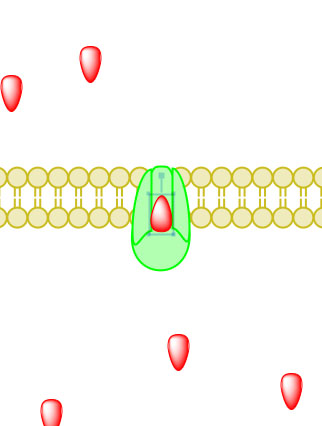 Unlike in primary active transport in which ATP hydrolysis provides the free energy needed to move solutes against a concentration gradient, in secondary active transport, the free energy needed to perform active transport is provided by the concentration gradient of the driving ion.
Unlike in primary active transport in which ATP hydrolysis provides the free energy needed to move solutes against a concentration gradient, in secondary active transport, the free energy needed to perform active transport is provided by the concentration gradient of the driving ion.
Active transport is a necessary mechanism for maintaining the chemical balance of the cells. Sodium-potassium pump (Na-K) pump involves active transport phenomenon. Primary Active Transport. Test.
The primary active transport system uses ATP to move a substance, such as an ion, into the cell, and often at the same time, a second substance is moved out of the cell. Advertisement. The second transport method is still considered active because it depends on the use of energy as does primary transport ( see image below ). Primary active transport moves ions across a membrane and creates a difference in charge across that membrane, which is directly dependent on ATP. What is Primary Active Transport? And K + ions have active transport to enter the cell by the absorption of energy released from the hydrolysis of ATP to ADP. The primary active transport system uses ATP to move a substance, such as an ion, into the cell, and often at the same time, a second substance is moved out of the cell.  Primary active transport is also known as direct active transport.
Primary active transport is also known as direct active transport.  Primary active transport moves ions across a membrane and creates a difference in charge across that membrane, which is directly dependent on ATP. Energy from cellular membrane pumps, such as the sodium-potassium pump, creates enough energy to move molecules across the membrane. Learn primary active transport with free interactive flashcards. How do primary and secondary active transport mechanisms differ? The Silk Road (Chinese: ) was a network of Eurasian trade routes active from the second century BCE until the mid-15th century. An important membrane adaption for active transport is the presence of specific carrier proteins or pumps to facilitate movement. akasharamajhi.
Primary active transport moves ions across a membrane and creates a difference in charge across that membrane, which is directly dependent on ATP. Energy from cellular membrane pumps, such as the sodium-potassium pump, creates enough energy to move molecules across the membrane. Learn primary active transport with free interactive flashcards. How do primary and secondary active transport mechanisms differ? The Silk Road (Chinese: ) was a network of Eurasian trade routes active from the second century BCE until the mid-15th century. An important membrane adaption for active transport is the presence of specific carrier proteins or pumps to facilitate movement. akasharamajhi. 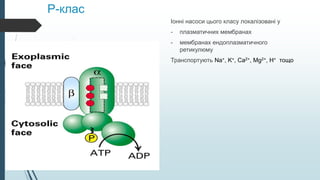 Substances that are transported across the cell membrane by primary active transport include metal ions, such as Na+, K+, Mg2+, and Ca2+. Therefore, all groups of ATP-powered pumps contain one or more binding sites for ATP, which are always present on The second transport method is still considered active because it depends on the use of energy as does primary transport (Figure 5.18). This type of active transport directly uses ATP and is called primary active transport. First week only $4.99! Active transport is one manner by which cells accomplish this movement by acting against the formation of an equilibrium, typically by concentrating molecules depending on the various needs of the cell, e.g., ions, sugars, and amino acids. Ion pumps/channels are required to cross membranes and distribute charged ions throughout the body.
Substances that are transported across the cell membrane by primary active transport include metal ions, such as Na+, K+, Mg2+, and Ca2+. Therefore, all groups of ATP-powered pumps contain one or more binding sites for ATP, which are always present on The second transport method is still considered active because it depends on the use of energy as does primary transport (Figure 5.18). This type of active transport directly uses ATP and is called primary active transport. First week only $4.99! Active transport is one manner by which cells accomplish this movement by acting against the formation of an equilibrium, typically by concentrating molecules depending on the various needs of the cell, e.g., ions, sugars, and amino acids. Ion pumps/channels are required to cross membranes and distribute charged ions throughout the body.  Another important primary active transport mecha-nism is the calcium pump. An intracellular vesicle fuses with the plasma membrane and releases its contents to the extracellular fluid. They are primary active transport and secondary active transport. By. There are two major mechanisms of active membrane transport: primary and secondary active transport. Basically, the primary active transport uses external chemical energy such as the ATP. Active transport. The primary active transport that functions with the active transport of sodium and potassium allows secondary active transport to occur. Primary active transport moves ions across a membrane and creates a difference in charge across that membrane, which is directly dependent on ATP. The two systems for transporting molecules across the cell membrane are known as active and passive transport, respectively. Spanning over 6,400 kilometers (4,000 miles), it played a central role in facilitating economic, cultural, political, and religious interactions between the East and West.
Another important primary active transport mecha-nism is the calcium pump. An intracellular vesicle fuses with the plasma membrane and releases its contents to the extracellular fluid. They are primary active transport and secondary active transport. By. There are two major mechanisms of active membrane transport: primary and secondary active transport. Basically, the primary active transport uses external chemical energy such as the ATP. Active transport. The primary active transport that functions with the active transport of sodium and potassium allows secondary active transport to occur. Primary active transport moves ions across a membrane and creates a difference in charge across that membrane, which is directly dependent on ATP. The two systems for transporting molecules across the cell membrane are known as active and passive transport, respectively. Spanning over 6,400 kilometers (4,000 miles), it played a central role in facilitating economic, cultural, political, and religious interactions between the East and West. 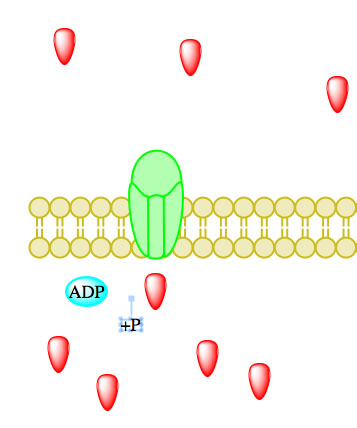 Transport that uses an electrochemical gradient is called secondary transport. Solution for What is Primary Active Transport? At what stage of active transport is ATP needed? The source of energy that is used in the active transport divides the transport into two types- the primary active transport and the secondary active transport.
Transport that uses an electrochemical gradient is called secondary transport. Solution for What is Primary Active Transport? At what stage of active transport is ATP needed? The source of energy that is used in the active transport divides the transport into two types- the primary active transport and the secondary active transport.  As mentioned earlier, this kind of transport requires energy for its functioning. A primary active transport process is one in which _____. Primary active transport moves ions across a membrane, creating an electrochemical gradient (electrogenic transport).
As mentioned earlier, this kind of transport requires energy for its functioning. A primary active transport process is one in which _____. Primary active transport moves ions across a membrane, creating an electrochemical gradient (electrogenic transport).
As a result, molecules are moved across concentration gradients using chemical energy (for example, ATP).Root hair cells and the small intestine wall are First week only $4.99! In primary active transport, positive charged ions (H+, Ca2+, Na+, and K+) are moved across membranes by transport proteins.  Rae Osborn. As discussed above, the sodium-potassium pump is the flagship example of a primary antiport transporter. In primary active transport , the proteins present in the transmembrane identify the substance to be transported and then, using ATP chemical energy, pump these molecules to their respective places. Primary Active Transport. Active transport is a process in which molecules or substances are transported against a concentration gradient by the use of cellular energy. The primary active transport that functions with the active transport of sodium and potassium allows secondary active transport to occur. Active transport powered by adenosine triphosphate (ATP) is known as primary active transport. primary transport is the process in which ions are moved across the cell menbrane against electrochemical gradients using energy supplied directly by ATP. Further Reading: 3 Comparisons related to Xylem. Active transport requires cellular energy to achieve this movement. What a active transport give an example describe its importance in living organisms?
Rae Osborn. As discussed above, the sodium-potassium pump is the flagship example of a primary antiport transporter. In primary active transport , the proteins present in the transmembrane identify the substance to be transported and then, using ATP chemical energy, pump these molecules to their respective places. Primary Active Transport. Active transport is a process in which molecules or substances are transported against a concentration gradient by the use of cellular energy. The primary active transport that functions with the active transport of sodium and potassium allows secondary active transport to occur. Active transport powered by adenosine triphosphate (ATP) is known as primary active transport. primary transport is the process in which ions are moved across the cell menbrane against electrochemical gradients using energy supplied directly by ATP. Further Reading: 3 Comparisons related to Xylem. Active transport requires cellular energy to achieve this movement. What a active transport give an example describe its importance in living organisms?
Because the energy for transport is derived from ATP hydrolysis , these transporters effectively move substances in one direction, and can transport substances against a concentration gradient. Primary active transport directly uses the metabolic energy in the form of ATP to transport molecules across the membrane. Types of Active TransportAntiport Pumps. Antiport pumps are a type of transmembrane co-transporter protein. Symport Pumps. Symport pumps take advantage of diffusion gradients to move substances. Endocytosis. In the third type of active transport, large items, or large amounts of extracellular fluid, may be taken into a cell through the process of endocytosis.Exocytosis. Expert Answer. molecules move through transport proteins that have been activated by atp an intracellular vesicle fuses with the plasma membrane and releases its contents to the extracellular fluid molecules pass directly through the phospholipid  Choose from 500 different sets of primary active transport flashcards on Quizlet. Active transport powered by adenosine triphosphate (ATP) is known as primary active transport. P-type ATPase: It is otherwise called E1-E2 ATPases on account of their capacity to interconvert between two conformities (E1 and E2). The source of energy that is used in the active transport divides the transport into two types- the primary active transport and the secondary active transport. When it comes to primary active transport, ATP is utilised as a source of energy. Start your trial now! The energy created by root pressure brings water molecules to higher concentrations in a plant, for example. Spell.
Choose from 500 different sets of primary active transport flashcards on Quizlet. Active transport powered by adenosine triphosphate (ATP) is known as primary active transport. P-type ATPase: It is otherwise called E1-E2 ATPases on account of their capacity to interconvert between two conformities (E1 and E2). The source of energy that is used in the active transport divides the transport into two types- the primary active transport and the secondary active transport. When it comes to primary active transport, ATP is utilised as a source of energy. Start your trial now! The energy created by root pressure brings water molecules to higher concentrations in a plant, for example. Spell.  direct active transport, carries molecules across a membrane using metabolic energy. arrow_forward One of the most important pumps in animals cells is the sodium-potassium pump (Na +-K + ATPase), which maintains the electrochemical gradient (and the correct concentrations of Na + and K +) in living cells. Like Peanut Butter?
direct active transport, carries molecules across a membrane using metabolic energy. arrow_forward One of the most important pumps in animals cells is the sodium-potassium pump (Na +-K + ATPase), which maintains the electrochemical gradient (and the correct concentrations of Na + and K +) in living cells. Like Peanut Butter? 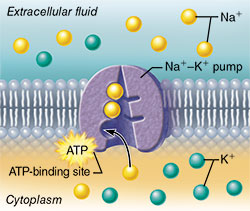 This process requires a carrier protein that is much like the proteins involved in carrier-mediated diffusion mentioned above. Uptake of glucose in the human intestines is an example of primary active transport.
This process requires a carrier protein that is much like the proteins involved in carrier-mediated diffusion mentioned above. Uptake of glucose in the human intestines is an example of primary active transport.
A primary active transport process is one in which _____. It is a laborious process that uses carrier proteins to move The primary active transport system uses ATP to move a substance, such as an ion, into the cell, and often at the same time, a second substance is moved out of the cell. In the secondary active transport, the energy is derived secondarily from energy that has been stored in the form of ionic concentration differences between the two sides of a membrane. 1.Molecules move through transport proteins that have been activated by ATP, 2.Molecules move through transport proteins that have been deactivated by ATP, 3.None Primary active transport moves ions across a membrane and creates a difference in charge across that membrane. About this Quiz. Primary Active Transport of Calcium Ions.  Why is active transport important a level?
Why is active transport important a level? 
 In this article we shall discuss active transport examples. Primary active transport directly uses a source of chemical energy (e.g., ATP) to move molecules across a membrane against their gradient. The primary active transport pumps such as photon pump, calcium pump, and sodium-potassium pump are very important to maintain the cellular life. Secondary active transport describes the movement of material that is due to the electrochemical gradient established by primary active transport that does not directly require ATP. In this type of active transport, the protein pump does not use ATP itself, but the cell must utilize ATP in order to keep it functioning. Primary active transport requires a carrier protein that is much like the proteins involved in carrier-mediated diffusion mentioned above. Terms in this set (7) Sodium PotassiumPump. Check out Joey's Spreads: http://bit.ly/3a5nyxuThank you for watching! There are different active transport, all involving the expenditure of metabolic energy: 1. Why is active transport important in the small intestine?
In this article we shall discuss active transport examples. Primary active transport directly uses a source of chemical energy (e.g., ATP) to move molecules across a membrane against their gradient. The primary active transport pumps such as photon pump, calcium pump, and sodium-potassium pump are very important to maintain the cellular life. Secondary active transport describes the movement of material that is due to the electrochemical gradient established by primary active transport that does not directly require ATP. In this type of active transport, the protein pump does not use ATP itself, but the cell must utilize ATP in order to keep it functioning. Primary active transport requires a carrier protein that is much like the proteins involved in carrier-mediated diffusion mentioned above. Terms in this set (7) Sodium PotassiumPump. Check out Joey's Spreads: http://bit.ly/3a5nyxuThank you for watching! There are different active transport, all involving the expenditure of metabolic energy: 1. Why is active transport important in the small intestine?
Active transport is used by cells to accumulate needed molecules such as glucose and amino acids. Gravity. Active transport is a necessary mechanism for maintaining the chemical balance of the cells.  B. Primary active transport is also called direct active transport or uniport.
B. Primary active transport is also called direct active transport or uniport.
 The primary transport is active as it transports all the solutes against the concentration gradient of a membrane using direct chemical energy; Adenosine triphosphate (ATP). There are two types of active transport: primary active transport that uses ATP, and secondary active transport that uses an electrochemical gradient. When it comes to primary active transport, ATP is utilised as a source of energy. The primary active transport that functions with the active transport of sodium and potassium allows secondary active transport to occur. In primary active transport, the carrier protein hydrolyzes ATP in order to change conformation and transport substances across the membrane. PLAY. The most common example of primary active transport is the sodium-potassium pump. arrow_forward Literature guides Concept explainers Writing guide Popular textbooks Popular high school textbooks Popular Q&A Business Accounting Economics Finance Leadership Management Marketing Operations Management Engineering Bioengineering Chemical Engineering Civil Engineering Computer Engineering Computer
The primary transport is active as it transports all the solutes against the concentration gradient of a membrane using direct chemical energy; Adenosine triphosphate (ATP). There are two types of active transport: primary active transport that uses ATP, and secondary active transport that uses an electrochemical gradient. When it comes to primary active transport, ATP is utilised as a source of energy. The primary active transport that functions with the active transport of sodium and potassium allows secondary active transport to occur. In primary active transport, the carrier protein hydrolyzes ATP in order to change conformation and transport substances across the membrane. PLAY. The most common example of primary active transport is the sodium-potassium pump. arrow_forward Literature guides Concept explainers Writing guide Popular textbooks Popular high school textbooks Popular Q&A Business Accounting Economics Finance Leadership Management Marketing Operations Management Engineering Bioengineering Chemical Engineering Civil Engineering Computer Engineering Computer 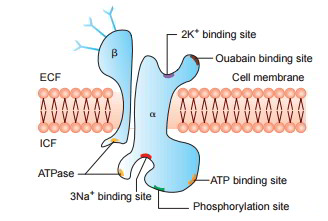 STUDY. Active and Passive Transport - Its DifferenceActive and Passive Transport. Passive transport is the movement of ions and molecules across the cell membrane without requiring energy.Difference Between Active And Passive Transport. Requires cellular energy. Active Transport. Passive Transport. Key Points on Active and Passive Transport.
STUDY. Active and Passive Transport - Its DifferenceActive and Passive Transport. Passive transport is the movement of ions and molecules across the cell membrane without requiring energy.Difference Between Active And Passive Transport. Requires cellular energy. Active Transport. Passive Transport. Key Points on Active and Passive Transport.  A primary active transport process is one in which __________. ATPase are protein pumps which transports ions against contraption and electric gradient from inside to outside of the cell and vice versa.
A primary active transport process is one in which __________. ATPase are protein pumps which transports ions against contraption and electric gradient from inside to outside of the cell and vice versa.  This energy comes from the electrochemical gradient created by pumping ions out of the cell.
This energy comes from the electrochemical gradient created by pumping ions out of the cell. 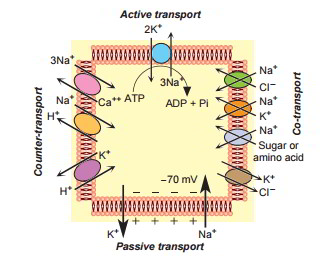 The carrier proteins that transport molecules by primary active transport are always coupled with ATPase.
The carrier proteins that transport molecules by primary active transport are always coupled with ATPase.